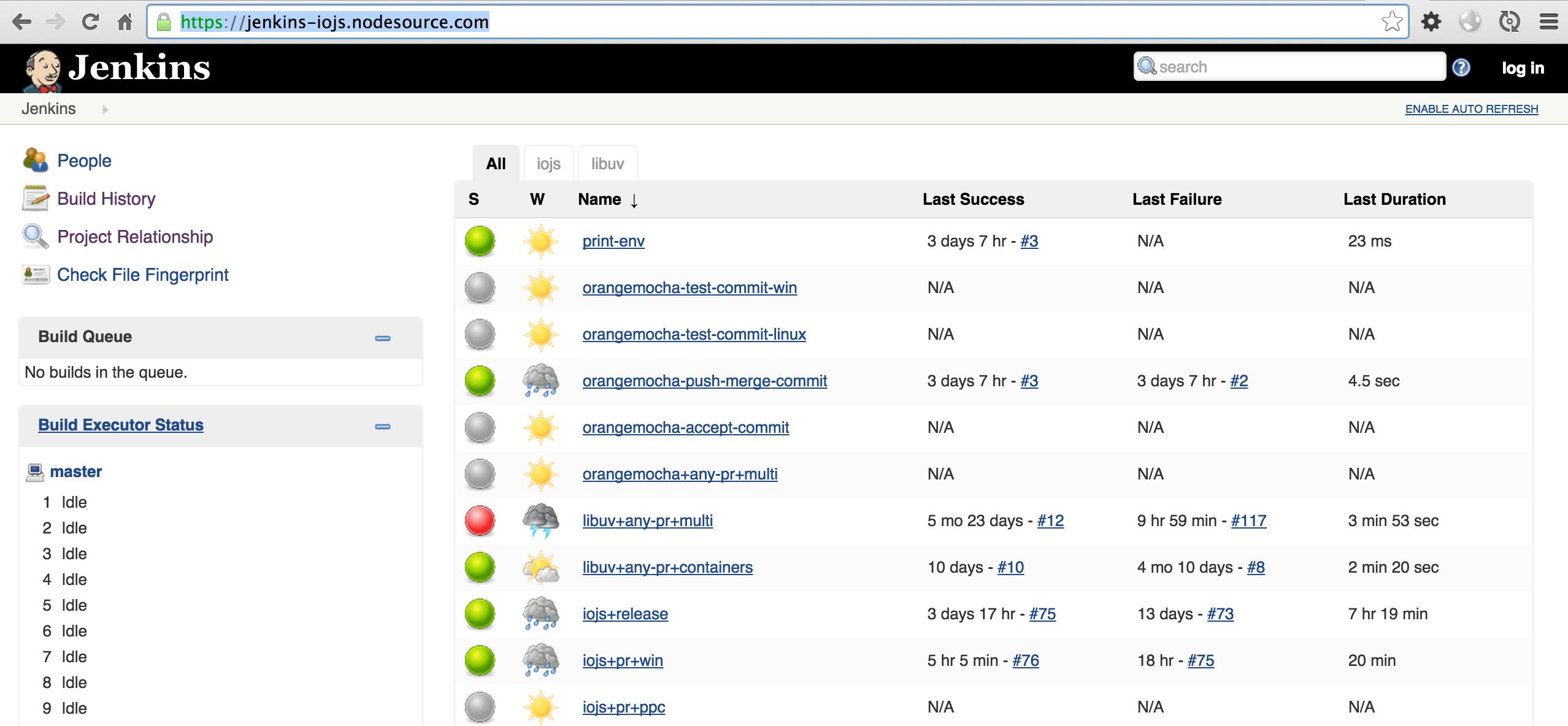Nodejs开源项目里怎么样写测试CI和代码测试覆盖率
Posted
tags:
篇首语:本文由小常识网(cha138.com)小编为大家整理,主要介绍了Nodejs开源项目里怎么样写测试CI和代码测试覆盖率相关的知识,希望对你有一定的参考价值。
测试
目前主流的就bdd和tdd,自己查一下差异
推荐
- mocha和tape
另外Jasmine也挺有名,angularjs用它,不过挺麻烦的,还有一个选择是qunit,最初是为jquery测试写的,在nodejs里用还是觉得怪怪的。
如果想简单可以tap,它和tape很像,下文会有详细说明
mocha
mocha是tj写的
https://github.com/mochajs/mocha
varassert=require("assert")
describe(\'truth\',function(){
it(\'should find the truth\',function(){assert.equal(1,1);})})断言风格,这里默认是assert,推荐使用chaijs这个模块,它提供3种风格
- Should
- Expect
- Assert
rspec里推荐用expect,其实看个人习惯
比较典型一个mocha例子
varassert=require(\'chai\').assert;var expect =require(\'chai\').expect;require(\'chai\').should();
describe(\'Test\',function(){
before(function(){// runs before all tests in this block})
after(function(){// runs after all tests in this block})
beforeEach(function(){// runs before each test in this block})
afterEach(function(){// runs after each test in this block})
describe(\'#test()\',function(){
it(\'should return ok when test finished\',function(done){assert.equal(\'sang_test2\',\'sang_test2\');var foo =\'bar\';
expect(foo).to.equal(\'bar\');done()})})})说明
- 理解测试生命周期
- 理解bdd测试写法
单元测试需要的各个模块说明
- mocha(Mocha is a feature-rich javascript test framework running on node.js and the browser, making asynchronous testing simple and fun.)
- chai(Chai is a BDD / TDD assertion library for node and the browser that can be delightfully paired with any javascript testing framework.)
- sinon(Standalone test spies, stubs and mocks for JavaScript.)
- zombie (页面事件模拟Zombie.js is a lightweight framework for testing client-side JavaScript code in a simulated environment. No browser required.)
- supertest(接口测试 Super-agent driven library for testing node.js HTTP servers using a fluent API)
更多的看 http://nodeonly.com/2014/11/24/mongoose-test.html
如果你想真正的玩敏捷,从用户故事开始,那么下面这2个库非常必要
啊,黄瓜。。。。
tape:像代码一样跑测试
tape是substack写的测试框架
https://github.com/substack/tape
var test =require(\'tape\').test;
test(\'equivalence\',function(t){
t.equal(1,1,\'these two numbers are equal\');
t.end();});tape是非常简单的测试框架,核心价值观是”Tests are code”,所以你可以像代码一样跑测试,
比如
node test/test.js写个脚本就无比简单了。当然如果你想加’test runner’ 库也有现成的。
The Test Anything Protocol
TAP全称是Test Anything Protocol
它是可靠性测试的一种(tried & true)实现
从1987就有了,有很多语言都实现了。
它说白点就是用贼简单的方式来格式化测试结果,比如
TAP version 13# equivalence
ok 1 these two numbers are equal
1..1# tests 1# pass 1# ok比如node里的实现https://github.com/isaacs/node-tap
var tap =require(\'tap\')// you can test stuff just using the top level object.// no suites or subtests required.
tap.equal(1,1,\'check if numbers still work\')
tap.notEqual(1,2,\'1 should not equal 2\')// also you can group things into sub-tests.// Sub-tests will be run in sequential order always,// so they\'re great for async things.
tap.test(\'first stuff\',function(t){
t.ok(true,\'true is ok\')
t.similar({a:[1,2,3]},{a:[1,2,3]})// call t.end() when you\'re done
t.end()})一定要区分tap和tape,不要弄混了
科普一下什么是CI
科普一下,CI = Continuous integration 持续集成
Martin Fowler对持续集成是这样定义的:
持续集成是一种软件开发实践,即团队开发成员经常集成他们的工作,通常每个成员每天至少集成一次,也就意味着每天可能会发生多次集成。每次集成都通过自动化的构建(包括编译,发布,自动化测试)来验证,从而尽快地发现集成错误。许多团队发现这个过程可以大大减少集成的问题,让团队能够更快的开发内聚的软件。
它可以
- 减少风险
- 减少重复过程
- 任何时间、任何地点生成可部署的软件
- 增强项目的可见性
- 建立团队对开发产品的信心
要素
1.统一的代码库 2.自动构建 3.自动测试 4.每个人每天都要向代码库主干提交代码 5.每次代码递交后都会在持续集成服务器上触发一次构建 6.保证快速构建 7.模拟生产环境的自动测试 8.每个人都可以很容易的获取最新可执行的应用程序 9.每个人都清楚正在发生的状况 10.自动化的部署
也就是说,测试不通过不能部署,只有提交到服务器上,就可以自动跑测试,测试通过后,就可以部署到服务器上了(注意是"staging", 而非"production")。
一般最常的ci软件是jenkins
举个大家熟悉的例子iojs开发中的持续集成就是用的jenkins
https://jenkins-iojs.nodesource.com/

jenkins是自建环境下用的比较多,如果是开源项目,推荐travis-ci
对开源项目做持续集成是免费的(非开源的好贵),所以在github集成的基本是最多的。
对nodejs支持的也非常好。
举2个例子
测试报告
近年随着tdd/bdd,开源项目,和敏捷开发的火热,程序员们不再满足说,我贡献了一个开源项目
要有高要求,我要加测试
要有更高要求,我要把每一个函数都测试到,让别人相信我的代码没有任何问题
上一小节讲的ci,实际上解决了反复测试的自动化问题。但是如何看我的程序里的每一个函数都测试了呢?
答案是测试覆盖率
在nodejs里,推荐istanbul
Istanbul - 官方介绍 a JS code coverage tool written in JS
它可以通过3种途径生成覆盖报告
- cli
- 代码
- gulp插件
安装
$ npm install -g istanbul执行
$ istanbul cover my-test-script.js --my test args它会生成./coverage目录,这里面就是测试报告
比如我的项目里
./node_modules/.bin/istanbul cover ./node_modules/mocha/bin/_mocha --report lcovonly
#MongooseDao()✓ should return ok when record create
✓ should return ok when record delete fixture-user
✓ should return ok when record deleteById
✓ should return ok when record removeById
✓ should return ok when record getById
✓ should return ok when record getAll
✓ should return ok when record all
✓ should return ok when record query
8 passing (50ms)=============================================================================Writing coverage object[/Users/sang/workspace/moa/mongoosedao/coverage/coverage.json]Writing coverage reports at [/Users/sang/workspace/moa/mongoosedao/coverage]============================================================================================================Coverage summary ===============================Statements:47.27%(26/55)Branches:8.33%(1/12)Functions:60%(9/15)Lines:47.27%(26/55)================================================================================默认,它会生成coverage.json和Icov.info,如果你想生成html也可以的。
比如说,上面的结果47.27%是我测试覆盖的占比,即55个函数,我的测试里只覆盖了26个。
那么我需要有地方能够展示出来啊
实践
我们以mongoosedao项目为例,介绍一下如何集成测试,ci和测试覆盖率
最终效果如图 
npm run
package.json里定义自定义执行脚本
"scripts":{"start":"npm publish .","test":"./node_modules/.bin/gulp","mocha":"./node_modules/.bin/mocha -u bdd","c以上是关于Nodejs开源项目里怎么样写测试CI和代码测试覆盖率的主要内容,如果未能解决你的问题,请参考以下文章